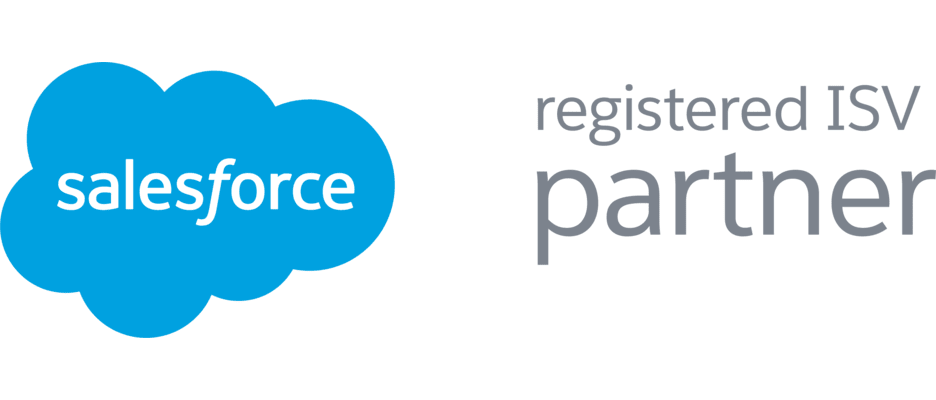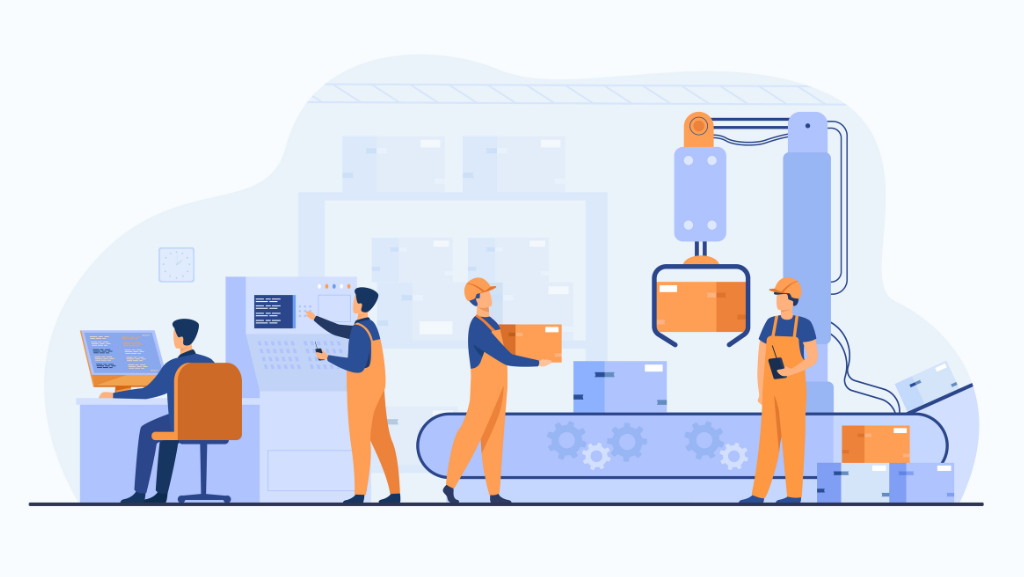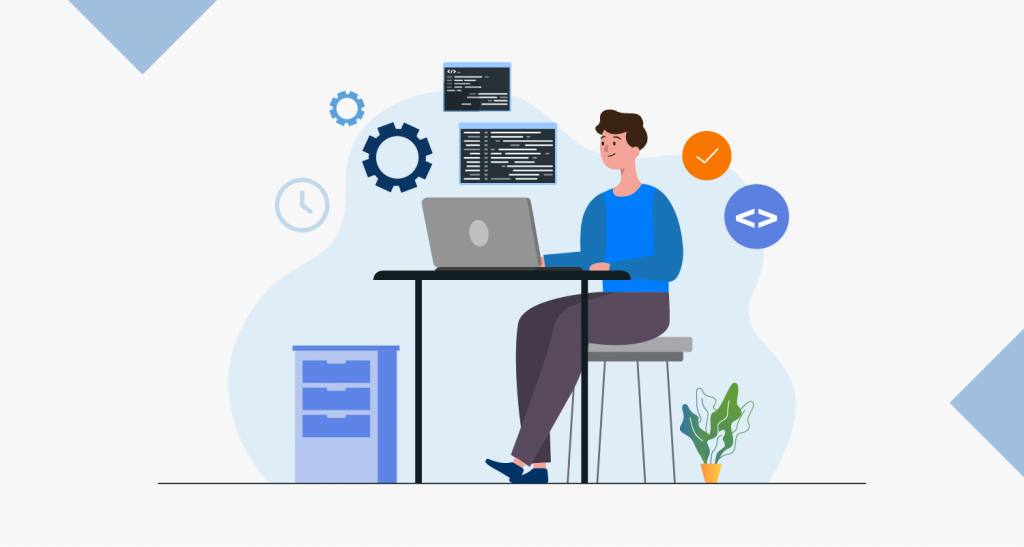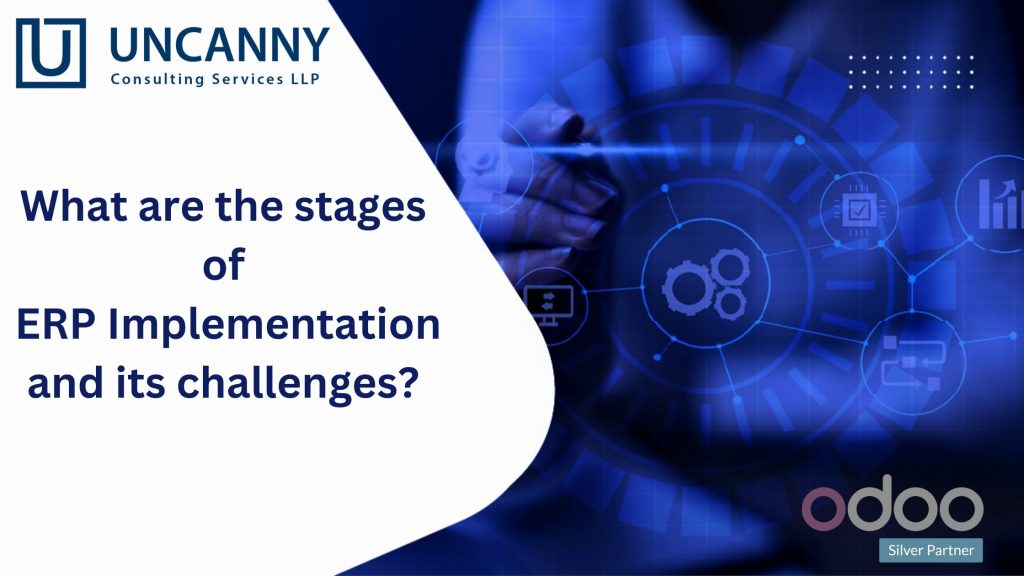One of the most difficult tasks is to implement an ERP system as it affects various parts of your business. With every other aspect of business, it is important to have a perfect ERP implementation plan.
It is preferable to segregate your implementation into different phases with logical objectives. If you ever start ERP implementation without having a clear project direction or scope, you might face numerous challenges on your way.
What do you mean by an ERP Implementation?
The term ERP implementation refers to the process of integrating different functions of business at one place. These different functions consist of sales, manufacturing, human resource, and financial management. Opting for an ERP implementation will provide you with enhanced productivity and efficacy.
ERP implementation is quite complex as it comprises various processes like planning, configuring, and deployment of an ERP. The entire process could go on for many months.
Seven Stages of ERP Implementation
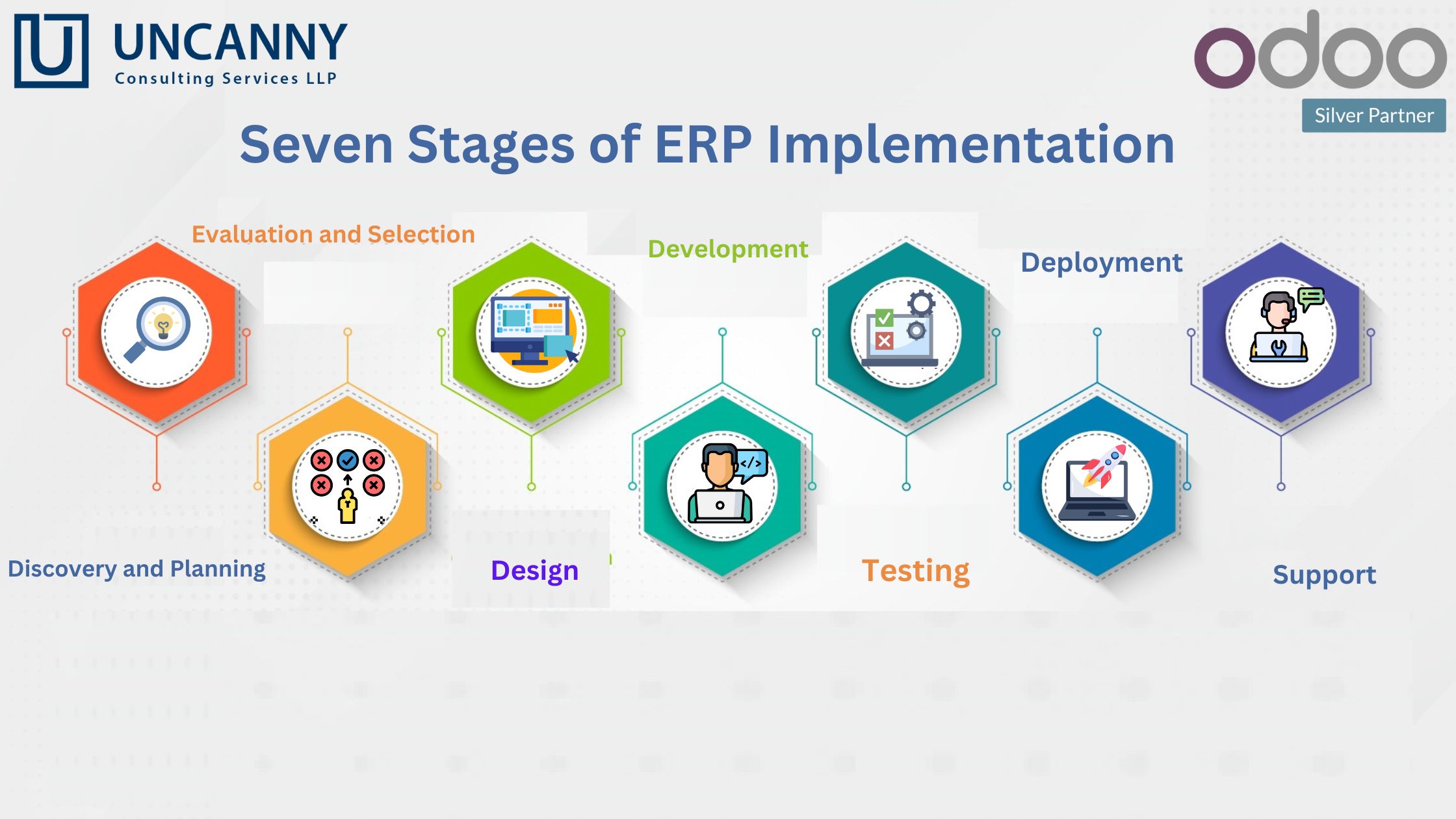
Discovery and Planning
Firstly, get a cross-functional team to decide what your organization needs from an ERP system. This functional team should look after the inefficiencies and other issues that are stopping your business from growing.
Evaluation and Selection
Once the team has prepared a document of requirements, it is time to assess the things the platform is offering your organization. Pick the platform that would solve your major problems and meet all your business requirements.
Design
Now that you have picked the platform, the implementation team will check if the new system will support the existing workflows that might need some changes. This is the right time to recognize if there is a need for any kind of customization.
Development
In this stage, both internal and external technical professionals ensure that the system meets your business requirements. Once the requirements are clear, your team can start migrating the company’s data to the new system. This is the right time to determine the ways of training your employees for the new ERP system. After this, you can schedule a session and acquire the required trading material.
Testing
It is one of the most important steps for performing a successful ERP implementation. Here, you will get a clear idea if everything is working the way you expect it to. Suppose, if anything is not going according to the plan, you can fix those issues at that particular moment. Whenever, you are testing a new system or platform, always cover all the users of your organization.
Deployment
Now is the time to go live. Most of the time, you might face difficulties in the starting phase, but you must always give priority to training employees. Some organizations decide to go for a phased roll-out whereas some of them make all the module live at once.
Support
Always ensure that your users have got everything to make the best use of the new ERP system. This is one of the ongoing processes consisting of additional configurations. These configurations are mostly performed with the help of a vendor or specialized consultants.
What are the best practices for ERP Implementation?
No ERP implementation can be categorized as easy or effortless. There will be times when some of your projects might need more time and effort, whereas some other would go quite smoothly. This is where the best ERP implementation practices take place. Taking help of these ERP implementation practices, you can initiate your project and make it a better experience for the users.
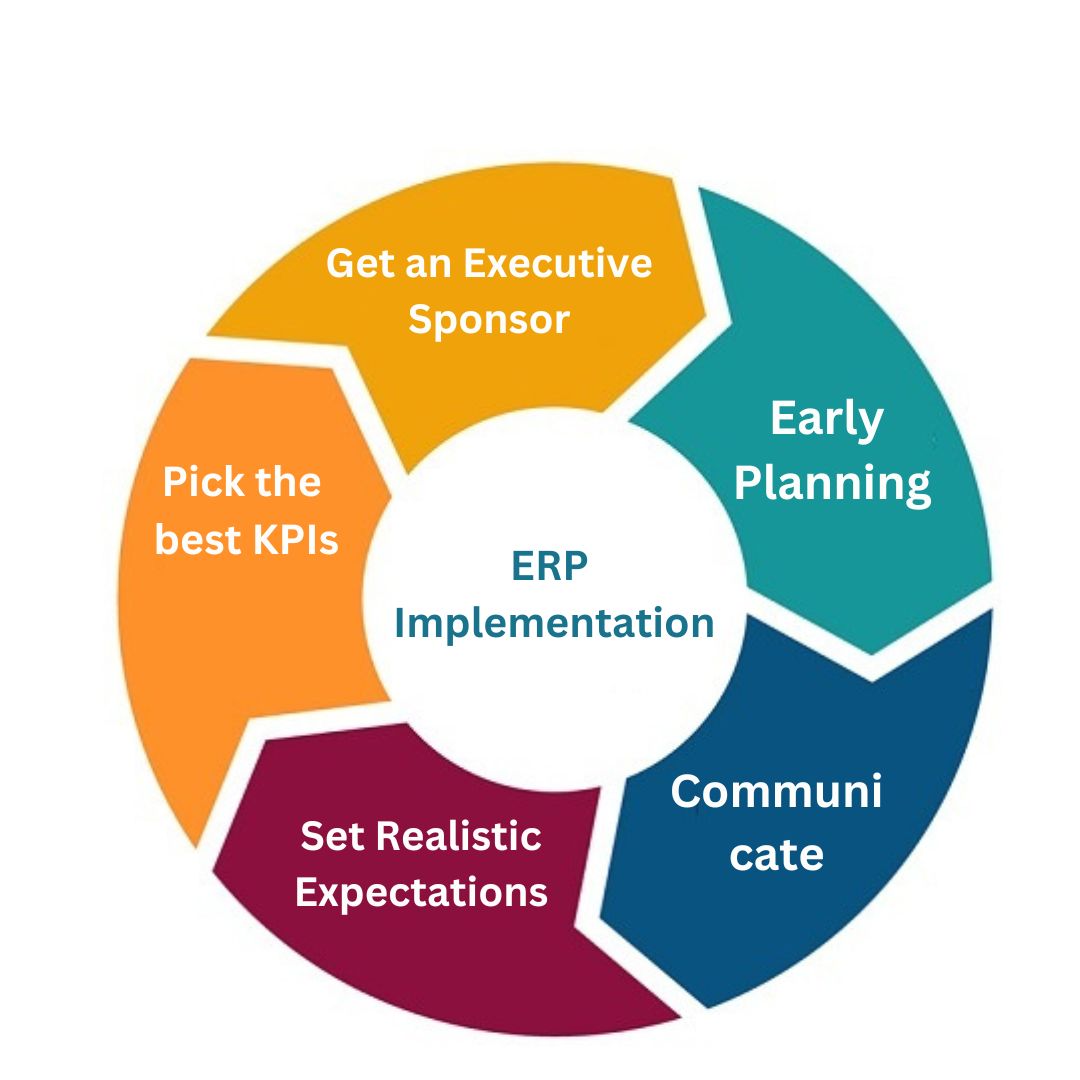
Get an Executive Sponsor
If your project is a critical one, it might need support from the top leaders. These leaders could be executive who head your organization and its different departments.
Early Planning
Ensure to plan priorly, so that you have enough time for knowing your ERP requirements, identifying your processes, and asses different vendors.
Communicate
One of the most essential things that keeps a project on track is none other than proper communication. You need to have thorough understanding and communication during the development and implementation. Taking advice or inputs of employees from the organization will ensure that your software will be helpful in performing daily jobs.
Set Realistic Expectations
Create a realistic timeline for every phase of the project with its estimated time and cost of a specific employee. Always make sure that your stakeholders know that there might be difficulties ahead in the way.
Pick the best KPIs
Get together with a group of business leaders for picking the KPIs that hold the most value for your company. Always think about your organizational goals and then proceed.
Top Three ERP implementation challenges for businesses
Pick the right ERP solution
There is no need to have a perfect software system for fixing everything. An ERP should be capable enough to make the best out of all business processes you are using right now. You have to bring all of them together under one roof and let everyone else to view the same information. It is extremely important to pick the right ERP implementation partner for your organization.
Cost of an ERP system
There is a possibility of buying software solution separately as per your business requirement. With this, your team will have an opportunity to pick a specific module and implement it. It will help you save a lot in terms of a major software renovation.
Incorporating new ERP software with existing one
Always make sure that your ERP system works with your existing software. It should also consist of features that will boost your business and its growth.
Conclusion
ERP implementation comes with its own challenges. But, when performed in the right manner it could do wonders for your business. We hope this blog on ERP implementation and its challenges will help you perform better implementation of your ERP system.
If you have any questions or queries regarding this blog or the entire topic, please feel free to share them in the comments.














